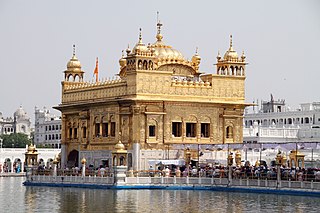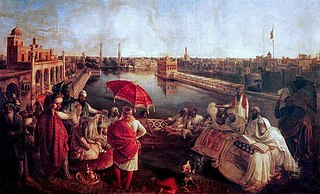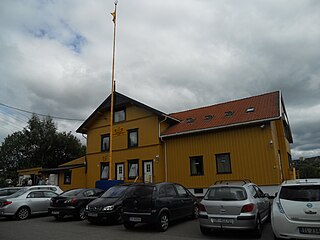
Sikhism, also known as Sikhi, is an Indian religion and philosophy in particular for the Sikh ethnoreligious group that originated in the Punjab region of India around the end of the 15th century CE. The Sikh scriptures are written in the Gurumukhi script particular to Sikhs. It is one of the most recently founded major religious groups and among the largest in the world, with about 25–30 million adherents.

Sikhs are an ethnoreligious group and Indo-European people who adhere to Sikhism, a religion that originated in the late 15th century in the Punjab region of the Indian subcontinent, based on the revelation of Guru Nanak. The term Sikh has its origin in the Sanskrit word śiṣya, meaning 'seeker', 'disciple' or 'student'. According to Article I of Chapter 1 of the Sikh Rehat Maryada, the definition of Sikh is: Any human being who faithfully believes in
- One Immortal Being
- Ten Gurus, from Guru Nanak Sahib to Guru Gobind Singh Sahib
- The Guru Granth Sahib
- The utterances and teachings of the ten Gurus and
- The initiation, known as the Amrit Sanchar, bequeathed by the tenth Guru and who does not owe allegiance to any other religion, is a Sikh.

Guru Gobind Singh was the tenth and last human Sikh Guru. He was a warrior, poet, and philosopher. In 1675, at the age of nine he was formally installed as the leader of the Sikhs after his father Guru Tegh Bahadur was executed by Emperor Aurangzeb. His father was the ninth Sikh Guru. His four biological sons died during his lifetime – two in battle and two executed by the Mughal governor Wazir Khan.

Khalsa refers to both a community that considers Sikhism as its faith, as well as a special group of initiated Sikhs. The Khalsa tradition was initiated in 1699 by the Tenth Guru of Sikhism, Guru Gobind Singh. Its formation was a key event in the history of Sikhism. The founding of Khalsa is celebrated by Sikhs during the festival of Vaisakhi.

The Sikh Empire was a regional power based in the Punjab region of the Indian subcontinent. It existed from 1799, when Maharaja Ranjit Singh captured Lahore, to 1849, when it was defeated and conquered by the British East India Company in the Second Anglo-Sikh War. It was forged on the foundations of the Khalsa from a collection of autonomous misls. At its peak in the 19th century, the empire extended from Gilgit and Tibet in the north to the deserts of Sindh in the south and from the Khyber Pass in the west to the Sutlej in the east as far as Oudh. It was divided into four provinces: Lahore, which became the Sikh capital; Multan; Peshawar; and Kashmir from 1799 to 1849. Religiously diverse, with an estimated population of 4.5 million in 1831, it was the last major region of the Indian subcontinent to be annexed by the British Empire.
The Three pillars of Sikhism, also called three duties, were formalised by Guru Nanak Dev Ji as:
- Naam Japo: The Guru led the Sikhs directly to practice Simran and Naam Japo—meditation on God and reciting and chanting of God's Name—Waheguru. The Sikh is to recite the Nitnem banis daily in remembrance of the grace and kirpa of the Almighty.
- Kirat Karo: He asked the Sikhs to live as householders and practice Kirat Karo: to honestly earn, with hard work, by one's physical and mental effort, while accepting God's gifts and blessing. One is to speak the truth at all times. Live a life of decency, high moral values and spirituality.
- Vaṇḍ Chakkō: The Sikhs were asked to share with everyone, Irrespective of caste, creed, color or sexuality by practising Vaṇḍ Chakkō—“Share and Consume together”. The community or Sadh Sangat is an important part of Sikhism. One must be part of a community that is pursuing the values set out by the Sikh Gurus and every Sikh has to give in whatever way possible to the community. This spirit of Giving is an important message from Guru Nanak.

Hari Singh Nalwa was Commander-in-chief of the Sikh Khalsa Fauj, the army of the Sikh Empire. He is known for his role in the conquests of Kasur, Sialkot, Attock, Multan, Kashmir, Peshawar and Jamrud. Hari Singh Nalwa was responsible for expanding the frontier of Sikh Empire to beyond the Indus River right up to the mouth of the Khyber Pass. At the time of his death, the western boundary of the Empire was Jamrud.

Kartarpur is a town, near the city of Jalandhar in Jalandhar district in the Indian state of Punjab and is located in the Doaba region of the state. It was founded by the fifth Guru of the Sikhs, Guru Arjan.

Singaporean Sikhs numbered 12,051 at the country's 2020 census, forming the country's sixth largest religious group at 0.35% of the population. Sikhism in Singapore has its roots in the military and policing forces of the British Empire. Currently, there are 12,000–15,000 Sikhs in Singapore. There are 7 gurdwaras along with a missionary society, a welfare society, two youth organizations and two sports clubs. Most Sikhs are from the Jat community.
The arrival of Sikhism in Wales is relatively recent. As of the 2021 United Kingdom census there were 4,048 Sikhs in the country representing 0.1% of the population.

The Battle of Nowshera was fought in Nowshera in March 1823 between the Yusufzai Afghans, supported by the Peshawar sardars, alongside Azim Khan Barakzai, the Afghan governor of Peshawar, where they would face the Sikh armies led by Maharaja Ranjit Singh. Azim Khan was a half-brother of Dost Mohammad Khan, future ruler of Kabul, and later Afghanistan. The battle was a victory for the Sikhs, successfully defeating Azim Khan's armies. This victory allowed them to begin to their occupation of the Peshawar Valley.

The Shaheedan Misl, also known as the Shahid Misl, was one of twelve Sikh Misls that later became the Sikh Empire. It held a small amount of territory in the Malwa (Punjab) area around the Damdama Sahib before being incorporated into the Sikh Empire of the Sukerchakia Misl by Ranjit Singh.

The Golden Temple (also known as the Harmandir Sahib, or the Darbār Sahib, is a gurdwara located in the city of Amritsar, Punjab, India. It is the pre-eminent spiritual site of Sikhism. It is one of the holiest sites in Sikhism, alongside the Gurdwara Darbar Sahib Kartarpur in Kartarpur, and Gurdwara Janam Asthan in Nankana Sahib.
Sikhism in Austria is a very small religious minority. There are about 10,000 Sikhs in Austria. As of 2012 there were three gurdwaras in Austria. As per Austrian government, Sikhism is now an official religion in Austria. The local population of Sikhs can now use Singh and Kaur as their last name.

In Norway, Sikhism has approximately 5,000 adherents, mostly living in Oslo. Oslo collectively has two gurdwaras.
The Battle of Jammu was fought between the Sikhs under the command of Banda Singh Bahadur against the Mughal forces near the hills of Jammu on 22 January 1712. The Mughals were able to achieve victory against the Sikhs.
The Battle of Sadhaura was fought between Sikhs and the Mughal, Sayyid, and Shaykh forces in Sadhaura in 1710. The imperial forces were defeated and took refuge behind the city's walls. Banda's forces captured the fort and levelled it to the ground. It resulted in a victory for the Sikhs where Banda Singh Bahadur defeated Osman Khan.

The Shiromani Akali Dal (SAD) is a centre-right Sikh-centric state political party in Punjab, India. The party is the second-oldest in India, after Congress, being founded in 1920. Although there are many parties with the description Akali Dal, the party that is recognized as "Shiromani Akali Dal" by the Election Commission of India is the one led by Sukhbir Singh Badal. The party has a moderate Punjabi agenda. On 26 September 2020, they left the NDA over the farm bills.
The Doaba Daudzai Tehsil was a tehsil administrative division in Peshawar District, Peshawar Division, Punjab Province, British India 1872–1893. As of 1891, it was one of the 128 tehsils in the province. Gholam Muhayuddin Khan served as tehsildar of the Doaba Daudzai tehsil. The areas of the erstwhile Doaba Daudzai tehsil are today part of Pakistan.
Sikhism in Denmark is a minority religion. There are estimated to be 5,000 Sikhs living in Denmark.












